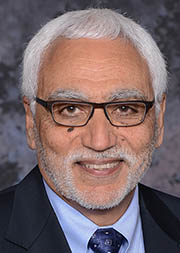
Welcome to the Department of Electrical Engineering (EE) at Stanford University. We are proud of our heritage of innovation and entrepreneurship that has helped create Silicon Valley and educated many leaders in industry and academia worldwide. Our faculty and students continue to advance the state-of-the-art, define new directions for electrical engineering, and develop new technologies to help address critical societal challenges in biology and medicine, energy, and the environment. Perhaps even more important is our unceasing commitment to our students, helping them learn, grow, and develop and achieve their goals, whether it is becoming a professor, an entrepreneur, or joining industry.
Electrical Engineering is the largest department in the School of Engineering at Stanford with nearly 60 faculty and over 1000 undergraduate, masters, and doctoral students. The department’s graduate programs continue to draw from a very strong application pool. University rankings, including the 2010 NRC ranking of doctoral programs, continue to place our department in the top group of all electrical engineering departments in the nation.
Since its formation in 1893, our Department has had a profound impact on society. Myriad innovations by our faculty and students, such as in electric power generation and transmission, wired and wireless communications, integrated electronics, digital computers, healthcare systems, cellular phones, and Internet‐based information technology, have fundamentally transformed all aspects of human life. Today, nearly every tool and manufactured product, from cars and refrigerators to phones and medical devices, includes electronic circuits, uses signal‐processing algorithms, and is linked to a network. These innovations have originated from research across three areas that form the intellectual core of the department:
-
Physical Technology & Science: Physical devices provide the means to connect the physical to the virtual world and provide the substrate for computation. Leveraging advances in basic materials and fabrication techniques, we create electronic, magnetic, electromechanical, optical, and biochemical devices that can sense or actuate in the physical world, and transform, store, or communicate information in the virtual world.
-
Hardware/Software Systems: The systems area includes analog and digital circuits, design techniques, networking, hardware and software architectures, and large‐scale software systems. Using devices created by physical technology research, we develop methods and prototypes for sensing, computation, and communication systems that achieve exponentially improved efficiency.
-
Information Systems & Science: Research on information addresses fundamental limits of information systems and methods to achieve these limits. We develop mathematical models, algorithms, and analysis tools for reliable communication, information processing, storage, and decision‐making, and for extracting knowledge from large data sets gathered in the physical and virtual worlds.
These three core research areas form a self‐reinforcing cycle in which new physical technologies enable new systems and novel models and algorithms running on high‐performance platforms provide fresh insights into creating new devices and systems. Our department’s mission, however, extends beyond disciplinary boundaries. The department has evolved into a major conduit for interdisciplinary research at Stanford. We build upon developments in the basic sciences and apply EE techniques to address challenges in other engineering and science disciplines through joint projects with many other departments and schools across Stanford.
The department also enjoys very close relationships with industry, both in terms of research and recruiting. Numerous companies participate in a variety of affiliates programs led by EE faculty, such as SystemX (previously Center for Integrated Systems), Center for Image Systems Engineering (SCIEN), Data Science Inititative, Experimental Data Center (SEDCL), Photonics Research Center (SPRC), and the Pervasive Parallelism Laboratory. Our students and faculty have cofounded some of the most successful high technology companies in the world and are consistently in high demand in industry.
There are many advantages to joining Stanford EE as a student. We offer a broad and innovative set of research programs, supported by state-of-the-art research equipment and a large set of diverse classes. Coming here allows you to interact and build friendships with an impressive set of students, faculty, and staff from around the world. Even better, you can do all that and also enjoy the amazing Bay Area weather while taking a morning hike in the hills or surfing on some afternoons.
Please browse our website, learn more about us, and contact us with any questions. If you are joining us as a student, we look forward to your contributions to the department and to EE in general. We hope to be part of your success.

Abbas El Gamal
Hitachi America Professor in the School of Engineering
Professor and Chairman, Department of Electrical Engineering
Stanford University


